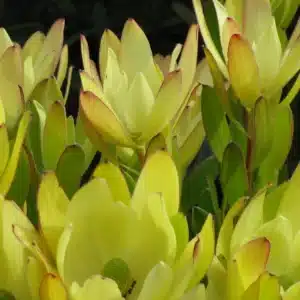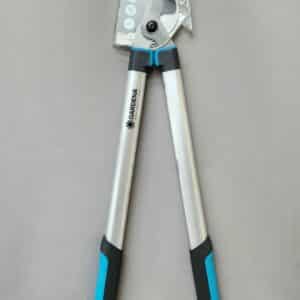Your guide to growing flower bulbs
Flowering plants

March and April shouldn’t just signify the time of year to get your annual flu shot and update your winter wardrobe. For serious gardeners, the start of autumn is also synonymous with planting spring bulbs.
The bulbs that are available at your nearest Stodels Garden Centre might not look like much now, but they’ll reward you with a magnificent display of flowers when spring arrives.
Follow our simple, step-by-step guide on how to make bulbs flourish in your garden:
Plant indigenous bulbs
Go the indigenous route if you can, as these bulbs are primed to grow well in South Africa.
Our list of favourites includes:
- Watsonia
- Tritonia
- Babiana
- Sparaxis
- Ixia
- Lachenalia
Steer clear of bulbs that have sprouted and those that don’t look healthy when you’re shopping. A good, healthy bulb should be firm to the touch. And remember to plant your bulbs soon after you’ve purchased them.
When to plant spring bulbs
Autumn is the best time of year to plant spring-flowering bulbs, as the soil is still warm, giving the plants’ root systems a chance to develop before the temperature drops in winter.
Use this simple monthly guide:
- March/April: Plant ranunculus, anemones, tritonias, ixias, freesias, sparaxis and babianas.
- April/May: Plant hyacinths, lilies, tulips and daffodils.
- August/September: Plant gladioli, liatris and dahlias.
Where to plant your bulbs
Bulbs that prefer lots of sunshine include ixia, babiana, ornithogalum, sparaxis, tritone and ranunculus. In turn, allium, hyacinth, freesia and leucojum do better in shady positions. However, they can handle a bit of early-morning and late-afternoon sun.
Bulbs that require some protection from the hot midday sun include anemones, tulips, hyacinths, narcissus, daffodils, ixia, muscari, lachenalia and Dutch iris.
Think carefully about your vision for your garden once the bulbs start to flower. Spring bulbs make for beautiful borders in garden beds, while those with striking foliage work particularly well in containers.
Ribbon planting in solid blocks of colour is very well suited to large gardens or alongside paths or driveways, whereas bulbs planted in drifts and clumps make for a more informal look. Go for indigenous bulbs if you’d like to add interest to a rock garden.
Soil requirements for bulbs
- Bulbs do best in cool, well-drained soil.
- The best soil for flower bulbs is sandy loam. Sandy soil can be improved with organic matter such as compost as well as water-retaining granules. If you have clay soil, add some coarse sand and compost to improve the soil’s texture and to allow for drainage.
- Prepare your garden beds or containers at least 7 days before planting your bulbs to give the fertiliser a chance to dissolve. If you skip this step, the fertiliser could burn the bulbs.
- Dig a hole that is as deep as the length of a spade (about 1.2m) and add lots of compost. Don’t use fresh manure, as this may damage the bulbs.
- Dig in a handful of planting fertiliser or bonemeal per square metre to a depth of 30cm and moisten the soil.
- If you’re planting in containers, add water-retaining granules to slow down water loss during the dry months.
Plant bulbs at the right depth
Read planting instructions carefully, as every bulb is unique. A good general rule is to plant bulbs at a depth of three times their height. If you’re planting your bulbs among established plants, dig the hole a little deeper than required.
Watering and feeding bulbs
Watering your bulbs regularly and correctly is incredibly important, as the roots need to be kept continuously moist from the moment the bulbs have been planted. If water restrictions allow, use a sprinkler and water the bulbs for approximately 45 minutes every 4–5 days. Monitor bulbs planted in pots carefully, as they tend to dry out very quickly.
Feed with a handful of 2:3:2 fertiliser per square metre every 14 days after planting to encourage growth. Once the first shoots start to appear, feed the plants with bulb food once every two weeks.
When to expect your first flowers
- End of July to August: Daffodils such as Paperwhites (these flower very early in the season), Flower Carpet, Fortune, Ice Follies, Trevithian, Winter Gold and Juanita, and ranunculus, Dutch iris, anemone, leucojum and hyacinth.
- August: Daffodils such as Barrett Browning, Birma, Early Splendour, Margaret Mitchell, Monique and Orange Bell, and ranunculus, Ipheion, muscari, Dutch iris, anemone, freesias, leucojum and hyacinth.
- End of August to mid-September: Daffodils such as Acropolis, Buttercup, Cheerfulness, Home Fires, Mount Hood, Pink Select, Tahiti, Thalia, Salome (very late) and Minnow (very late), and ixia, sparaxis, ranunculus, tritonia, Ipheion, muscari, tulips, anemone, freesias, leucojum and hyacinth.
Expert tip – don’t forget about autumn-flowering bulbs if you want some colour to keep you cheerful during the colder months. Here are some of our favourites:
- Crocus
- Dahlia
- Nerine
- Sternbergia
- Cyclamen hederifolium
You might also like
Shop online
-
PLASTIC SQUARE BLACK/GREEN POT 7CM X15CM
- R49.99
- Select options This product has multiple variants. The options may be chosen on the product page Learn More
-
PRUNING LOPPER
- R799.99
- Add to cart Learn More
-
- Sale!
MED ADULT 15KG
- Original price was: R1,599.99.R1,279.99Current price is: R1,279.99.
- Add to cart Learn More




